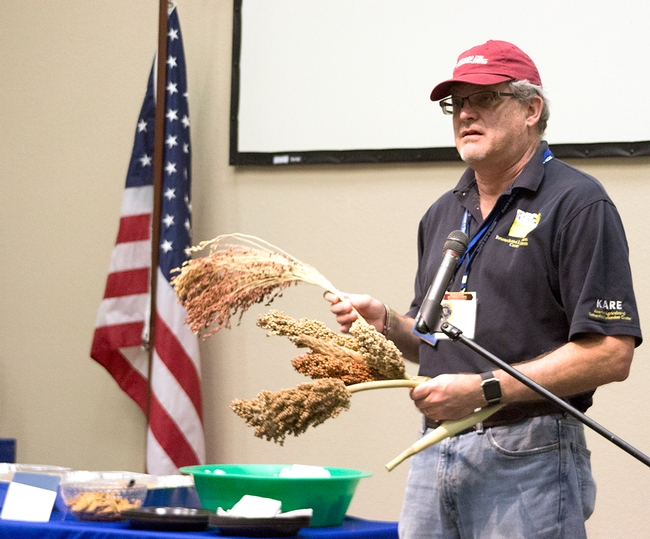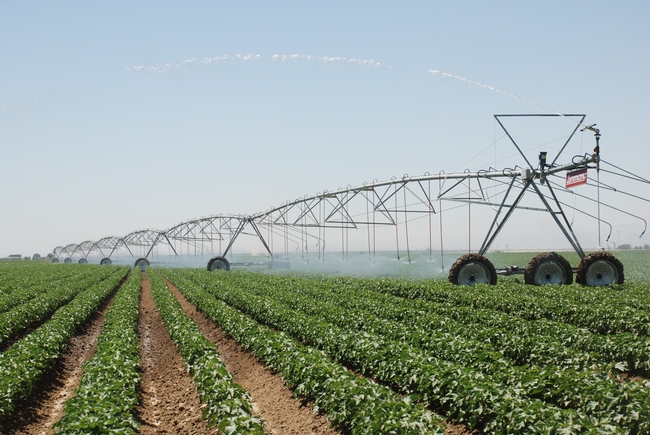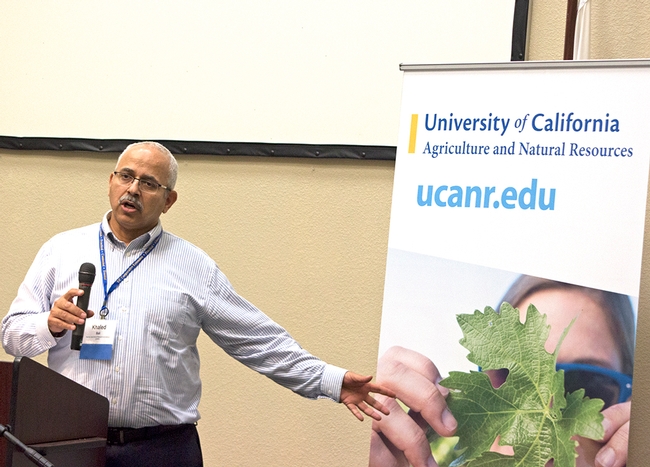Record winter rainfall during the 2016-17 winter has enabled farms to emerge from survival mode in the short term, but scientists are still working hard to be ready for the next drought, reported Tim Hearden in Capital Press.
Hearden spent a day at the UC Kearney Agricultural Research and Extension Center in Parlier to learn how researchers at the facility and the UC West Side Research and Extension Center near Five Points are combining technology with management practices to put every drop of irrigation water to work.
“This is one of the few places in the world where you can do drought research on a field level,” said Jeff Dahlberg, director of the 330-acre Kearney facility. “What I'm planning is a world-class drought nursery.”
At the West Side REC, researchers are working with farmers to perfect micro-irrigation efficiency and test drought stress on the area's most prevalent crops.
“We'll grow a tremendous number of cultivars of a crop” and identify “what seem to be the most promising cultivars when you grow them under drought conditions,” said Bob Hutmacher, a cotton specialist and the center's director.
Hearden spoke to Jeff Mitchell, UCCE cropping systems specialist and director of the Conservation Agriculture Systems Innovation center (CASI). CASI is encouraging farmers to adopt farming practices that save water, reduce dust and help improve the condition of soil, such as subsurface drip irrigation, overhead irrigation, minimum tillage, cover crops and crop residues.
“This is not done right now in California,” Mitchell said. “In the future, there may be a strong likelihood of certain agricultural sectors adopting these practices.”
Other subsurface irrigation trials are showing dramatic increases in yields. Khaled Bali, an irrigation water management specialist at Kearney, said underground drip systems in alfalfa fields have achieved 20 to 30 percent more yields while in some cases using 20 percent less water.
Kevin Day, a UCCE pomology advisor in Tulare County, is trying subsurface drip in a peach and nectarine orchard after working with the USDA to use it for pomegranates. He's seen as much as a 90 percent reduction in weeds because there's no surface water to feed them.
“Fewer weeds, fewer pesticides,” he said. “We use high-frequency irrigation. We irrigate as the crop needs it. When you do that, you keep the roots deeper, which makes for better aeration.”


